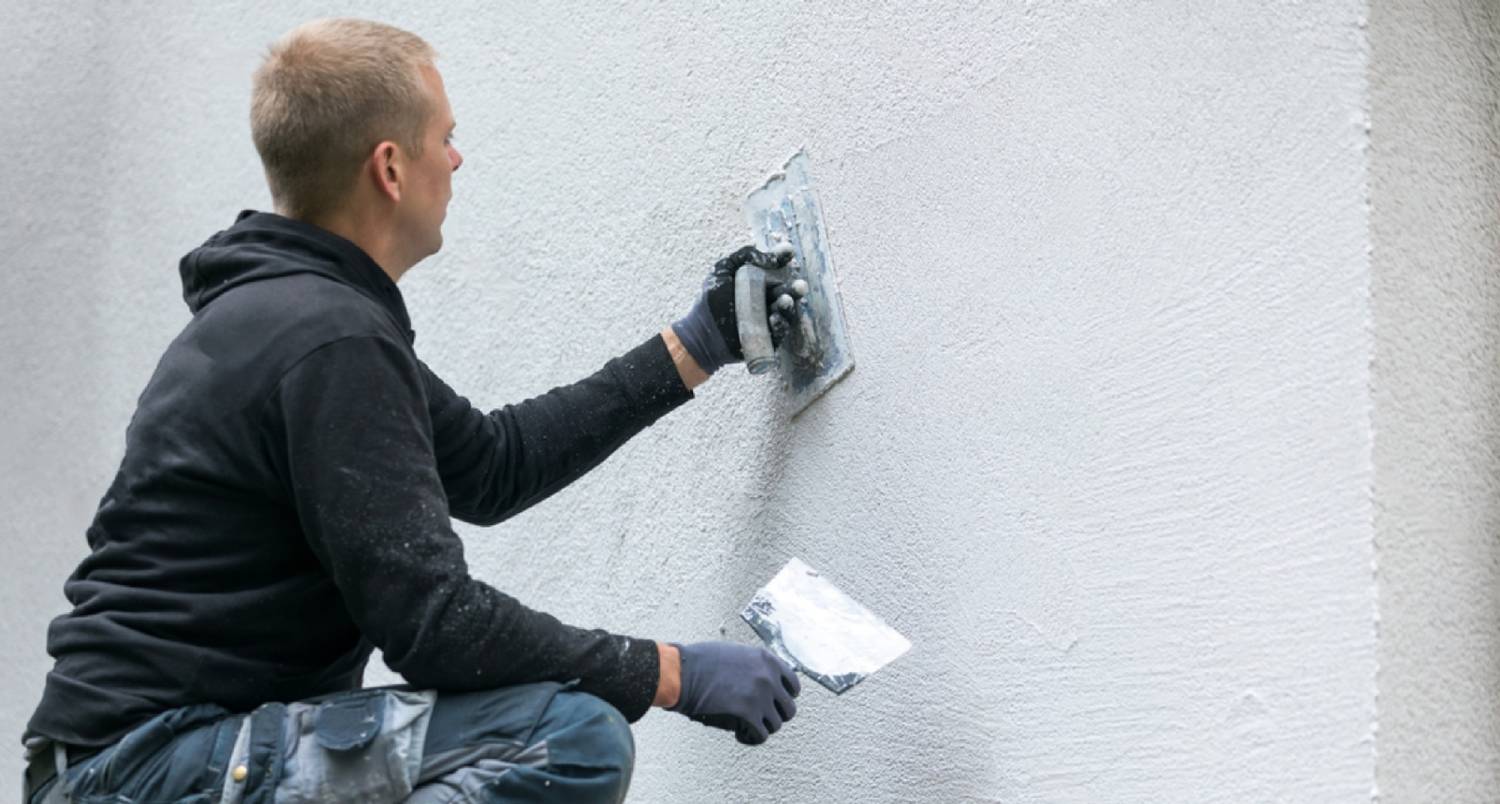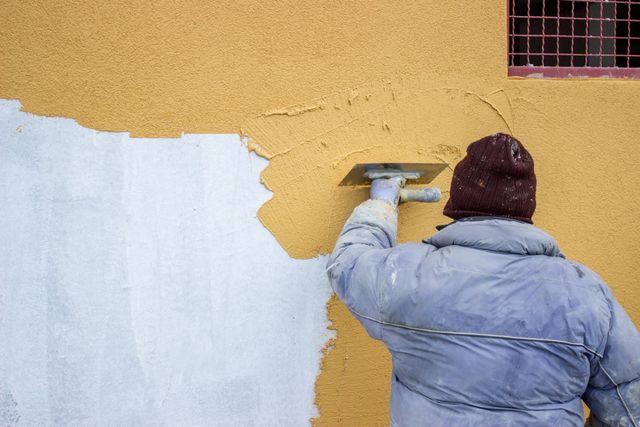Discovering the Adaptability of Stucco in Modern Style
Stucco has long been acknowledged for its aesthetic appeal and versatility, yet its duty in modern design warrants a better evaluation. By exploring its ingenious applications, from striking exteriors to energy-efficient designs, one can value just how stucco is redefining the limits of building expression.
Historical Importance of Stucco
The historical value of stucco is profound, as it has played a pivotal function in architectural methods throughout numerous societies for centuries. Coming from ancient human beings, stucco was utilized by the Egyptians and Greeks as a durable and flexible surface for both indoor and outside surfaces. Its versatility to different environments and capacity to imitate extra expensive materials made it a favored option.
In the Roman era, stucco ended up being a main ornamental component, used thoroughly in public structures, vacation homes, and temples. The Romans fine-tuned the application methods, enabling intricate designs and relief sculptures. During the Renaissance, stucco experienced a revival, particularly in Italy, where it was employed in ornamental details and elaborate exteriors, showcasing the artistry of the period.

Modern Applications in Layout
Stucco has found restored relevance in contemporary architecture due to its adaptability and aesthetic charm (stucco contractor). This traditional material is significantly utilized in modern design, bridging the gap in between classic and contemporary appearances. Architects and designers appreciate stucco for its flexibility, permitting it to be applied in different styles-- from minimal frameworks to elaborate Mediterranean styles
In household projects, stucco provides a tidy, smooth surface that boosts the aesthetic cohesion of facades. Its capability to adjust to different shapes and surfaces makes it an ideal selection for both brand-new constructions and improvement tasks. In addition, stucco's resilience and reduced maintenance needs add to its expanding popularity in city settings, where resilient materials are vital.
Industrial applications have actually also embraced stucco, with several services opting for this product to develop inviting and distinct shops. The use of stucco in public structures, such as schools and neighborhood facilities, showcases its capacity for producing aesthetically attractive environments while offering superb insulation residential or commercial properties.
Color and Texture Technologies
Checking out color and structure innovations in stucco has actually opened up brand-new avenues for designers and designers, improving the product's aesthetic influence in modern construction. Current advancements in pigment innovation have permitted a larger range of colors, allowing designers to develop striking facades that integrate perfectly with their environments or stick out as bold building statements. This flexibility in shade choice offers engineers the capability to stimulate certain psychological feedbacks and integrate with regional aesthetic appeals.
Appearance technologies have actually likewise transformed stucco applications. Strategies such as troweling, splashing, and stamping have actually led to varied surface area coatings, ranging from smooth and refined to responsive and sturdy. These variations not only add to the structure's personality yet also play an essential duty in light communication, boosting the visual depth and dimensionality of surfaces.
Additionally, the introduction of synthetic stucco options has actually increased style possibilities, using enhanced longevity and climate resistance while maintaining visual appeal. As engineers remain to experiment with cutting-edge shade schemes and textured coatings, stucco stays a critical element in modern-day style, showcasing the product's adaptability and classic relevance in contemporary design.
Sustainability and Energy Performance
Developments in shade and structure have not just enhanced the visual appeal of stucco however additionally paved the way for higher focus on sustainability and energy efficiency in contemporary design. As environmental problems end up being increasingly noticeable, the building and construction market is turning its attention to materials that contribute favorably to ecological balance.
Stucco, made up primarily of natural products such as lime, concrete, and sand, my response provides a sustainable option to more resource-intensive structure materials. Its durability and longevity decrease the demand for constant replacements, thus decreasing waste and resource consumption with time. Modern-day stucco solutions often include energy-efficient additives that boost insulation properties, lowering heating and cooling costs for buildings.
The reflective qualities of stucco can also be crafted to reduce heat absorption, adding to cooler interior environments and much less dependence on artificial climate control systems. By promoting energy preservation and minimizing the carbon impact of frameworks, stucco straightens with the principles of sustainable style. As contractors and designers embrace innovative strategies and green methods, stucco attracts attention as a functional and responsible selection in contemporary design.

Study of Stucco Projects
The convenience of stucco as a structure product is exemplified in numerous successful architectural projects that highlight its practical and aesthetic benefits. One remarkable example is the restoration of the historical Casa de la Guerra these details in Santa Barbara, The Golden State. Using stucco not only protected the building's Spanish Colonial Resurgence style but also improved its durability and weather resistance, ensuring durability while keeping architectural integrity.
Another compelling instance is the contemporary property job, the Cactus House in Scottsdale, Arizona. stucco contractor. This striking home functions a smooth stucco finish that harmonizes with the bordering desert landscape. The stucco's light color reflects heat, contributing to energy efficiency, while the distinctive surfaces include visual interest
In Addition, the Kings Cross redevelopment in London showcases the versatility of stucco in metropolitan settings. The application of stucco on contemporary mixed-use buildings develops a natural visual that respects historic context while accepting modern layout concepts.
These case researches show just how stucco can serve various architectural functions, from preservation and energy effectiveness to visual improvement, making it a flexible option in modern style.
Verdict
 In conclusion, stucco's historical relevance and modern-day flexibility make it a beneficial material in modern style. As demonstrated with different instance researches, stucco continues to play a critical duty in forming the why not find out more architectural landscape of the modern age.
In conclusion, stucco's historical relevance and modern-day flexibility make it a beneficial material in modern style. As demonstrated with different instance researches, stucco continues to play a critical duty in forming the why not find out more architectural landscape of the modern age.
In verdict, stucco's historical relevance and modern flexibility make it a beneficial material in contemporary design.